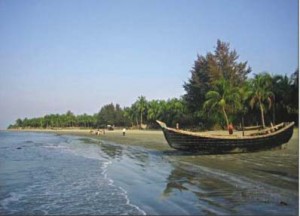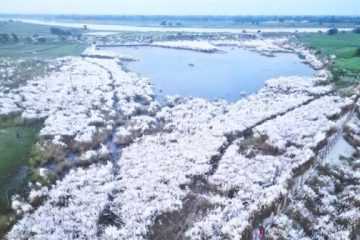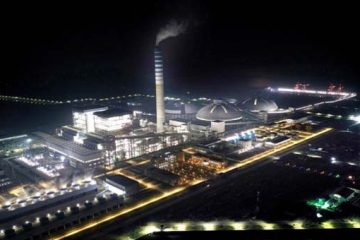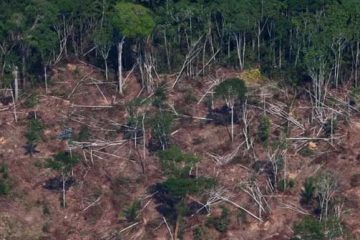Dr. Md. Mizanur Rahman
 Global climate change poses a high risk to the biodiversity of coral reefs of St. Martin’s. The major threats to the coral reefs are high levels of sedimentation, cyclones, storm surges and beach erosion. Global warming is a matter of major concern for coral reefs of this island as elsewhere.
Global climate change poses a high risk to the biodiversity of coral reefs of St. Martin’s. The major threats to the coral reefs are high levels of sedimentation, cyclones, storm surges and beach erosion. Global warming is a matter of major concern for coral reefs of this island as elsewhere.
St. Martin is a tiny island in the Bay of Bengal approximately 9 km south of the Cox’s Bazar-Teknaf peninsula. It is the the southernmost part of Bangladesh and is locally known as Narikel Jinjira (Coconut Island). St. Martin’s Island is a stock of extraterrestrial, marine and land resources. Depending on tidal level the surface area is about 8 kilometres and the beach length is about 14 kilometres. This is the most attractive tourist spot of Bangladesh.
The biodiversity of St. Martin’s island is characterised by mangrove forests, seaweeds, corals, turtles, crabs, fish, seabirds, coconut trees and Pandanus vegetation. The island is a unique example of co-occurrence of different ecosystems. Mangroves are home to corals, crabs, sea weeds and sea birds, and provide excellent nurseries for marine fishes. It also protects the inhabitants from the storm surges, cyclones and tidal waves, and prevents the island from erosion.
Screw pine (Pandanus) is one of the iconic tree species of this island. It grows on exposed mainland and along beaches, and has thick ‘prop roots’ to anchor itself in the loose sand. The island is a congenial habitat of a diverse coral community represented by approximately 66 Scleractinian coral species, of which 19 are fossil corals, 36 are living corals and 11 are soft corals (Tomascik 1997). About 14% area of this island is visited by 03 species of marine nesting turtles including Olive Ridly. All of them are considered as globally endangered by IUCN.
This is also a suitable habitat for different species of multi- colour ornamental fishes. During the year 1997, 240 fish species were recorded from the catch landed on this island and 86 of them are coral associated (Tomascik 1997). The abundant coral associated fishes are Damsel, Parrot, Surgeon, Groupers, Snappers, Emperors and Butterfly fish (Haider 2008). 186 species of mollusc and oyster, 7 species of crab, 9 species of echinoderms, 4 species of sea urchin, 1 specie of sea cucumber, some brittle stars, 5 species of marine mammals, a number of colourful nudibranch and bryozoans, 14 species of algae, 29 reptilian species and 120 species of birds (out of them 53 species are migratory) were recorded at the St. Martin’s Island.
Impact on biodiversity
Coconut trees: Reproductive development of coconut tree is highly sensitive to high temperature and water stress. The fruit set is adversely affected, mainly due to a reduction in pollen viability. The nut development is affected mainly resulting in small number of nuts, empty nuts or elongated nuts.
Mangrove forests: Sea level rise will cause a major threat to mangrove ecosystems through sediment erosion, inundation stress and increased salinity at landward zones. These problems will be exacerbated for mangrove stands of this island due to ‘coastal squeeze’ (landward migration is restricted by smaller size and human settlements). High rainfall and silts being washed down can also affect mangrove growth weakening its resilience.
Screw pine (Pandanus): Increasing salinity will cause high mortality of Pandanus trees. The removal of Pandanus trees will enhance beach and dune erosion.
Seaweed: Ozone layer depletion will allow a greater amount of ultraviolet rays that can be harmful for seaweeds. UV rays decrease photosynthesis and productivity of seaweeds and directly affect bio-molecules.
Sea-algae: 40% algae population may die due to climate change by the end of this century (Muller 2009).
Coral: Global climate change poses a high risk to the biodiversity of coral reefs of St. Martin’s. The major threats to the coral reefs are high levels of sedimentation, cyclones, storm surges and beach erosion. Global warming is a matter of major concern for coral reefs of this island as elsewhere. The most noticeable damage caused by high sea temperature is coral bleaching. Coral bleaching turns into colourless ugly coral. Coral reefs have already suffered major mortalities as a result of high-temperature events. It is also dependent on a species of algae that lives symbiotically in its body and produces additional food by photosynthesis. When the sea temperature rises above 28°C, the coral expels the algae and consequently it starves.
Turtle: Sea-level rise causes erosion of turtle nesting beaches. Higher sand temperature leads to changes in sex ratios or prevent eggs from hatching. Coral reefs are essential feeding habitats of turtles. Coral bleaching destroys the feeding sources of turtles. Huge rainfall can raise ground water tables, thereby flooding nests of turtles.
Mollusc: Sea acidification will decline the abundance of mollusc.
Crabs and shrimps: Due to sea level rise, the breeding place of crabs and shrimps will be destroyed.
Sea fish: Fishes will lose their habitats with coral bleaching and mangrove destruction.
Seabirds: High sea temperature will affect seabird foraging success, growth patterns and reproductive potentiality. Coral bleaching increases surface temperature, which decreases breeding and populations of seabirds.
How to mitigate
* To strengthen monitoring of biological resources and impact of climate change for appropriate biodiversity management
* To develop alternative livelihoods for the people who are dependent on coral resources
* To establish an appropriate conservation strategy
* To emphasise the conservation programme of coral ecosystem and protection of migratory birds
* To keep the turtle’s habitat undisturbed
* To involve NGOs in the conservation programme
* To establish an information system of biodiversity of this island
* To strengthen research work on the impact of climate change
* To emphasise ex-situ conservation of endangered species
* To measure the adverse effects of natural calamities, global warming and sea level rise
* To create public awareness by using different media
* To raise funds for conservation programme
* To implement ecosystem approach and community based conservation programme by involving local people
* To maintain and restore mangroves for reducing erosion
* To establish mechanisms to promote carbon uptake
Dr. Md. Mizanur Rahman is a biodiversity specialist, NDC, Jhalakathi Collectorate. E-mail: mizan_peroj @yahoo.com





